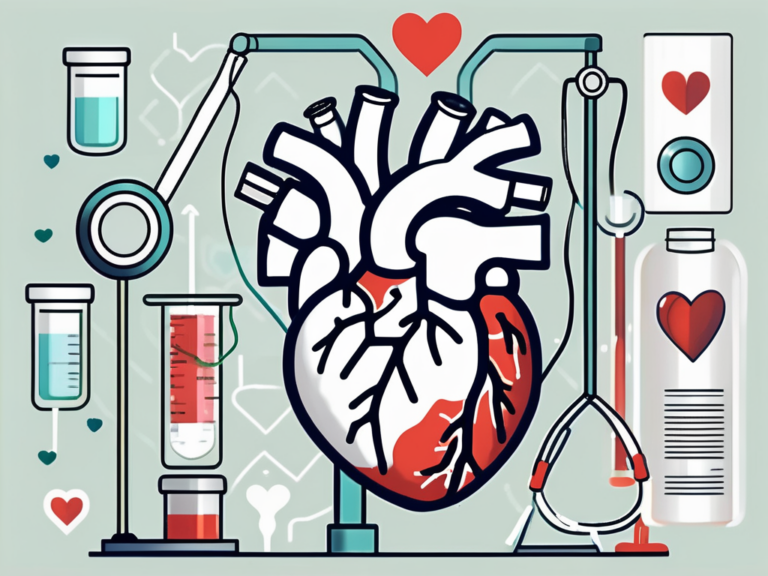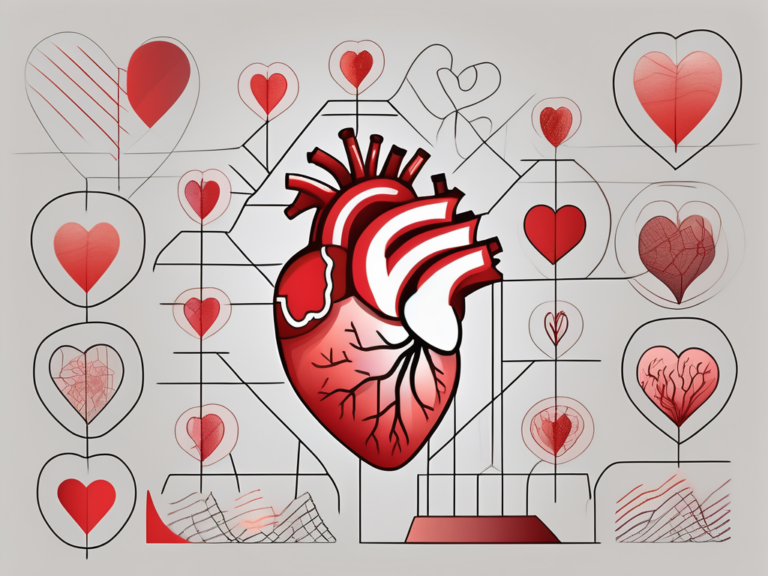Top 3 Heart-Healthy Exercises for a Stronger Cardiovascular System
Regular exercise is essential for maintaining a healthy cardiovascular system. Not only does exercise strengthen the heart, but it also improves overall circulation, lowers blood pressure, and reduces the risk of heart disease. If you’re looking to prioritize your heart health and boost your fitness, here are the top three heart-healthy exercises you should incorporate into your routine.
New Mask Mandate in Maryland Effective 1/12/2024
Before diving into the exercises, it’s important to address the latest update regarding the mask mandate in Maryland. As of January 12, 2024, a new mask mandate has been implemented to help reduce the spread of COVID-19. It is crucial to adhere to these guidelines while exercising to protect yourself and others.
The new mask mandate in Maryland comes as a response to the ongoing battle against the COVID-19 pandemic. With the emergence of new variants and the continuous transmission of the virus, it has become imperative to take additional measures to safeguard public health. The mandate requires all individuals, regardless of vaccination status, to wear masks in indoor public spaces, including gyms and fitness centers.
Wearing masks during exercise sessions may present some challenges, but it is a necessary step to ensure the safety and well-being of everyone involved. The mask mandate applies to all types of physical activities, from cardio workouts to weightlifting sessions. It is important to note that wearing a mask does not replace other preventive measures, such as maintaining physical distance and practicing good hand hygiene.
When it comes to choosing the right mask for your workout, it is recommended to opt for masks that provide a balance between breathability and filtration. Look for masks made of breathable materials, such as cotton or moisture-wicking fabrics, that allow for comfortable breathing during exercise. Additionally, ensure that the mask fits snugly over your nose and mouth to minimize the risk of respiratory droplet transmission.
While the new mask mandate may feel inconvenient, it is a temporary measure aimed at protecting the health and well-being of the community. By wearing masks during exercise, we can contribute to the collective effort of reducing the spread of COVID-19 and ultimately help bring an end to this pandemic. Let’s continue to prioritize the health and safety of ourselves and those around us as we navigate these challenging times.
Get Your Heart Pumping with Aerobic Exercise
Aerobic exercise, also known as cardiovascular exercise, is any type of activity that increases your heart rate and breathing rate. This form of exercise is excellent for improving the health of your cardiovascular system. Examples of aerobic exercises include brisk walking, jogging, swimming, cycling, and dancing.
Benefits of Cardiovascular Workouts
Aerobic exercises offer a wide range of benefits for your heart health. They help to strengthen the heart muscle, increase cardiac output, and improve the efficiency of oxygen delivery to the body. These workouts also promote weight loss, reduce stress levels, and enhance overall well-being.
One of the key benefits of aerobic exercise is its ability to strengthen the heart muscle. When you engage in activities like brisk walking or jogging, your heart works harder to pump blood throughout your body. Over time, this increased workload strengthens the heart muscle, making it more efficient at pumping blood. This can help reduce the risk of heart disease and other cardiovascular conditions.
In addition to strengthening the heart, aerobic exercise also increases cardiac output. Cardiac output refers to the amount of blood pumped by the heart in a minute. Regular aerobic workouts can improve cardiac output, allowing your heart to pump more blood with each beat. This increased blood flow helps deliver oxygen and nutrients to your muscles and organs, promoting overall health and well-being.
Another advantage of aerobic exercise is its positive impact on weight loss. When you engage in activities like swimming or cycling, you burn calories and fat, which can lead to weight loss over time. Regular cardiovascular workouts can help you shed excess pounds, improve your body composition, and boost your metabolism. This can not only improve your physical appearance but also reduce the risk of obesity-related health conditions such as diabetes and high blood pressure.
Furthermore, aerobic exercises have been shown to reduce stress levels. When you engage in activities like dancing or brisk walking, your body releases endorphins, which are natural mood-boosting chemicals. These endorphins help reduce stress and anxiety, promoting a sense of well-being and relaxation. Regular cardiovascular workouts can be an excellent way to unwind, clear your mind, and improve your mental health.
In conclusion, aerobic exercise offers numerous benefits for your heart health and overall well-being. By engaging in activities that increase your heart rate and breathing rate, you can strengthen your heart muscle, improve cardiac output, promote weight loss, reduce stress levels, and enhance your overall quality of life. So, get moving and start reaping the rewards of aerobic exercise!
Build Strength with Resistance Training
In addition to aerobic exercise, incorporating resistance training into your fitness routine is crucial for a stronger cardiovascular system. Resistance training involves activities that work against a force to build and strengthen muscles. This can include weightlifting, resistance bands, or even bodyweight exercises.
Resistance training is not only beneficial for building muscle and improving cardiovascular health, but it also offers a wide range of other advantages. One of the key benefits is increased bone density. As you age, your bones naturally become weaker and more prone to fractures. However, engaging in regular resistance training can help combat this by stimulating bone growth and enhancing bone mineral density.
Moreover, resistance training can have a significant impact on your mental well-being. When you engage in exercises that challenge your muscles, your body releases endorphins, which are known as “feel-good” hormones. These endorphins not only help elevate your mood but also reduce stress and anxiety levels. So, in addition to sculpting a stronger physique, resistance training can provide a much-needed boost to your mental health.
Effective Exercises for Building Muscle
When it comes to resistance training, focusing on compound exercises that target multiple muscle groups at once is highly effective. Examples of compound exercises include squats, deadlifts, bench presses, and rows. These exercises not only help to build muscle but also have a positive impact on your cardiovascular health.
Another effective exercise for building muscle is the pull-up. This compound movement not only targets your back muscles but also engages your biceps, shoulders, and core. By incorporating pull-ups into your resistance training routine, you can develop upper body strength and improve your overall muscular endurance.
In addition to compound exercises, isolation exercises can also be beneficial for targeting specific muscle groups. For example, bicep curls can help you develop stronger and more defined biceps, while tricep dips can target and tone your triceps. By incorporating a combination of compound and isolation exercises into your resistance training routine, you can ensure that you are effectively targeting all major muscle groups for optimal strength and muscle development.
Improve Flexibility and Balance through Stretching
Flexibility and balance are often overlooked aspects of fitness, but they play a crucial role in maintaining a healthy cardiovascular system. Stretching exercises help to increase the range of motion in your joints and improve overall flexibility. Yoga and Pilates are excellent choices for enhancing flexibility and balance.
Did you know that stretching not only improves flexibility, but it also helps to increase blood flow to your muscles? When you stretch, you are not only lengthening your muscles, but you are also increasing the circulation of oxygen and nutrients to those muscles. This increased blood flow can help to reduce muscle soreness and promote faster recovery after a workout.
Now, let’s dive into some essential stretches that can help you achieve better flexibility. When it comes to stretching, it’s important to focus on both static and dynamic stretches. Static stretches involve holding a position for a prolonged period, while dynamic stretches involve continuous movement. Incorporating both types into your routine will help improve flexibility and balance, reducing the risk of injuries during exercise.
Essential Stretches for Better Flexibility
1. Hamstring Stretch: Sit on the floor with one leg extended in front of you and the other leg bent with the sole of your foot against your inner thigh. Reach forward with both hands, keeping your back straight, and try to touch your toes. Hold this position for 30 seconds, then switch legs and repeat.
2. Quadriceps Stretch: Stand tall with your feet hip-width apart. Bend one knee and bring your heel towards your glutes, grabbing your ankle with your hand. Gently pull your heel towards your glutes until you feel a stretch in the front of your thigh. Hold for 30 seconds, then switch legs and repeat.
3. Shoulder Stretch: Stand with your feet shoulder-width apart. Extend one arm straight across your chest, parallel to the ground. Use your other hand to gently pull your extended arm towards your chest until you feel a stretch in your shoulder. Hold for 30 seconds, then switch arms and repeat.
Remember, it’s important to listen to your body and never push yourself too far when stretching. Stretching should feel good and not cause any pain. If you experience any discomfort, ease off the stretch and consult with a fitness professional or healthcare provider.
Finding the Right Exercise for Weight Loss
If weight loss is your primary goal, incorporating exercises that burn calories and increase your heart rate is essential. While aerobic exercises are great options, it’s also important to vary your workouts for optimal results. This can include high-intensity interval training (HIIT), circuit training, or participating in group fitness classes.
Exploring Different Workout Options for Shedding Pounds
Experimenting with different workout options can help you find an exercise that you enjoy and will stick to in the long run. From kickboxing to Zumba, there are countless options available. The key is to find an activity that you find fun and engaging, ensuring you stay motivated on your weight loss journey.
One exciting option to consider is kickboxing. This high-energy workout combines martial arts techniques with cardiovascular exercises, making it a great choice for those looking to shed pounds. Kickboxing not only helps you burn calories but also improves your coordination, flexibility, and overall strength. The combination of punches, kicks, and knee strikes engages multiple muscle groups, providing a full-body workout that can help you achieve your weight loss goals.
If you prefer a more dance-inspired workout, Zumba might be the perfect fit for you. This Latin-inspired dance fitness program offers a fun and energetic way to burn calories and shed pounds. With its infectious music and easy-to-follow choreography, Zumba keeps you moving and grooving while targeting various muscle groups. Whether you’re a seasoned dancer or have two left feet, Zumba classes are designed to be inclusive and enjoyable for everyone.
Prioritize Your Heart Health for a Better Life
Your heart health should be a top priority in your overall well-being. Taking care of your cardiovascular system is crucial for a long and fulfilling life. By incorporating aerobic exercise, resistance training, and stretching into your routine, you can strengthen your heart and reap the numerous benefits.
Aerobic exercise, such as brisk walking, running, or cycling, gets your heart pumping and increases your lung capacity. This type of exercise helps lower your blood pressure, reduce the risk of heart disease, and improve your overall cardiovascular fitness. Resistance training, on the other hand, focuses on building muscle strength and endurance. By engaging in activities like weightlifting or using resistance bands, you can improve your heart’s efficiency and promote healthy blood flow. Lastly, stretching exercises help improve flexibility and range of motion, reducing the risk of injuries and enhancing your overall physical performance.
Before embarking on any new exercise regimen, it’s important to consult with a healthcare professional or a certified fitness trainer, especially if you have any pre-existing medical conditions. They can provide personalized guidance and ensure that you’re engaging in activities that are safe and suitable for your individual needs.
Tips for Maintaining a Healthy Heart
Apart from regular exercise, there are other lifestyle factors that contribute to a healthy heart. A balanced diet plays a crucial role in maintaining cardiovascular health. Incorporating a variety of fruits, vegetables, lean proteins, and whole grains into your meals provides essential nutrients and helps lower cholesterol levels. Additionally, managing stress is vital for heart health. High levels of stress can lead to elevated blood pressure and increased risk of heart disease. Finding healthy coping mechanisms, such as practicing mindfulness or engaging in relaxation techniques, can help reduce stress and promote a healthier heart.
Getting enough sleep is another important aspect of heart health. Poor sleep quality or insufficient sleep can increase the risk of developing conditions like high blood pressure and obesity, which are detrimental to cardiovascular health. Aim for 7-9 hours of quality sleep each night to give your heart the rest it needs to function optimally.
Lastly, avoiding smoking is crucial for a healthy heart. Smoking damages blood vessels, increases the risk of blood clots, and raises blood pressure. Quitting smoking or avoiding it altogether can significantly reduce your risk of heart disease and improve your overall well-being.
Remember, consistency is key when it comes to improving your heart health. Make exercise a regular part of your routine, and you’ll soon experience the positive impact it has on your cardiovascular system and overall well-being. By prioritizing your heart health, you’re investing in a better and healthier life.






